I started with the best of intentions; first the news of the Hardy manufacturing exodus to Korea, and me suffering that odd moment of clarity, where I’m wondering about all those extra spools I promised myself I’d eventually get – and never did.
Anglers are a superstitious and fastidious lot – willing to put an asterisk next to any item that isn’t precisely the way it’s always been. We label items with pre- and post- to rarify them far in excess of their true value.
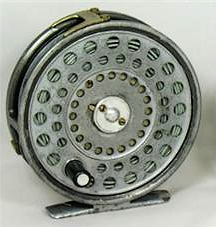 The best Hardy’s were always pre-War, polar bear was pre-ban, the biggest fish were post-extinction, and you fished twice as much pre-marriage, somehow we’re all inexorably tied to one or the other prefix.
The best Hardy’s were always pre-War, polar bear was pre-ban, the biggest fish were post-extinction, and you fished twice as much pre-marriage, somehow we’re all inexorably tied to one or the other prefix.
Anyone that’s fished for a couple decades has a sizable inventory of hardware with years of service left, unchanged by treaty, economic uncertainty, or Act of Congress. Our reaction to change is predictable; we scramble around moaning, and score what we can before someone cleans out the spare parts.
It’s a pilgrimage to the vendor’s back room or an overlooked dusty shelf somewhere behind the register, or its eBay, that bastion of castoff’s, semi-sales, and shade-tree dealers that delight in our lust for the dubious all-star equipment of yesteryear.
Fishermen are patient, and study their prey
I was a huge fan of the old Scientific Angler System series of fly reels, made by Hardy under the Scientific Angler, and L.L. Bean labels – and sold in England (by Hardy) as the Marquis. A solid reel, not overly ornate, with a heavy exposed rim allowing you to drape a thumb on it for increased control.
I needed a reel for an Scientific Anglers System 8 (SA 8), and a extra spool for an SA 9. I still haven’t figured how I had the spool but no reel, I figure a buddy or older brother was involved.
Like a small minnow in a pond of bigger fish I darted out and slammed the first spool that showed, in hindsight paying double what it was worth.
Lesson Learned: One of them will show every week, due to the US, Canada, and most of the UK emptying their garage. Before buying, watch a few auctions to see the range in price for the item.
After my initial taste of being a “food group” – I settled in and watched a half dozen spool auctions complete – without me. Like the eBay rods, trout sizes command a higher price than Steelhead and Saltwater tackle, and an extra premium is put on pristine condition, and unique history of the reel.
As a fisherman – not a reel collector, all I’m going to do with a pristine reel is use it. I’ll swear mightily when I scratch it, get misty eyed when it’s dented, and bounce it off of every boulder and stream bank I stumble over. When I’m done, it’ll be recognizable by the patina – the record of every fish caught, every misstep taken, and every pratfall endured.
Pristine is nice, but I’ve got no business paying that extra premium.
Lesson Learned: Decide whether you’re a fisherman or a reel collector, stay out of the auctions that you don’t belong in – you’ll save a lot of money.
The discovery that professionals are involved in many trades was a bit of heartbreak, but not unexpected. I was looking to fill a simple need and some sharp fellow is in there throwing elbows to turn a profit. Feedback from past sales showed me who were players and who were the amateurs, and knowing what company I was in suggested when to bid and when to play it cagey.
They love tinhorns, we’re emotionally involved and even if it’s a couple extra spools or a Ross reel we’ve always wanted to own, they’ll descend in the last 3 seconds of the auction and snatch it away for a great price – with us fumbling to respond.
Then they put the reel up again under their name (or another account) and force the price higher.
They use bid sniping software that guarantees the bid will land in the last 10 seconds of the auction. We’re watching the clock tick thinking it’s ours – and a bargain, and they snatch it right out from under while we struggle with the keyboard.
The software is automated and requires no human interaction other than max bid, and while we’re shaking fists at the screen, they’re at work oblivious to our hatred.
The unscrupulous professional will auction the reel he’s just won a week later at a starting bid of .99 cents, and when you put down your max bid of $145, you’ve just played into their hands. Often a third account (usually with “0” feedback) is used to bump the price until they’ve recouped their costs – then they’ll allow the tinhorn’s to fight over table scraps, guaranteeing they’ll sell it for more than they paid.
Lesson Learned: Look at the feedback of the person selling the reel. Look at what they’ve bought and what they’ve sold. If it’s all fly fishing gear, you’re dealing with a professional. That’s good and sometimes bad; good because they’re describing the item accurately and fairly, and they’ll be practiced at prompt delivery. There’s the occasional “player” – who’s just trying to turn a buck, that’s not so good. Look for accounts with low (or no) feedback that come in and bump the price $5 a crack … and then mysteriously stop near some preset value.
Lesson Learned: Never bid what you’ll pay, only bid $1.00 over the current price. If there’s a shady dealer he’ll stop bumping it once he’s the high bidder. Use automated software to bid your maximum in the last 10 seconds of the auction.
 On eBay a “CFO” isn’t a “C.F.O.” – and the best deals come on a misspelling or an incomplete description. Professional resellers always use the “Hardy” word in the title, “.. a Scientific Anglers reel made by Hardy Brothers,” that’s because “fly reel” is too vague, and you’re likely to use the vendor name to search for specific models. Their goal is to put the merchandise in front of the folks looking for it, so they’ll use all the keywords possible, it’s good marketing.
On eBay a “CFO” isn’t a “C.F.O.” – and the best deals come on a misspelling or an incomplete description. Professional resellers always use the “Hardy” word in the title, “.. a Scientific Anglers reel made by Hardy Brothers,” that’s because “fly reel” is too vague, and you’re likely to use the vendor name to search for specific models. Their goal is to put the merchandise in front of the folks looking for it, so they’ll use all the keywords possible, it’s good marketing.
Someone selling a reel or spool from a deceased relative doesn’t know Hardy Bros. from Laurel and Hardy, so they’ll advertise the reel as a “Scientific Anglers System 7” – precisely what the back of the reel says; they don’t know what it’s worth and they’re hoping you do. Absent the “Hardy” label in the text description, their auction will only see half the eyes that are looking, virtually guaranteeing the reel sells for at least $20 less than one using all the right words.
Lesson Learned: Misspellings and the text used in the advert determine how many do ( or don’t ) see the auction, if you’re after a particular model, always search for it by what it says on the back of the reel. A non-fisherperson will invariably use that as their auction description.
The Beauty of Fingerprints
Fine reels are like any finely crafted item, the marks of Time gives each a unique tale and also speaks eloquently of it’s past life and owner.
Well fished reels look the part – and while a lot of the finish may be missing around the rim – and it hasn’t been oiled recently, it still has another hundred years of service left. Reel collectors avoid the worn reels – as if a damp reel put away prematurely has lost all luster. It’ll certainly destroy the finish, and it won’t be terribly pretty, but mechanically the reel is sound.
Bent spools can be “unbent” with finger pressure, and worn latches that cause the spool to slop off can be fixed with an “elbow” from a hairpin. These are simple mechanical devices that can be restored easily. Bent rims and frames are entirely different – and typically snap if you attempt to straighten them.
I gravitate to a lot of well worn and damaged reels. I can repair many ailments myself, and a lot of parts can be salvaged to keep your current stable of functional reels tuned and precise.
Sometimes you can get the spool for half the normal price, as the reel surrounding it is damaged beyond repair. Your fellow anglers will ignore auctions with obvious damage, often allowing you to swoop in and recover the spool for half it’s normal value. Parts are in short supply, sometimes two cheap damaged reels equals a single functional reel and a reservoir of extra parts.
Lesson Learned: You don’t compete with collectors on worn or blemished reels, they want pristine condition, and a little rust or wear keeps the casual types at arm’s length.
Lesson Learned: On a damaged reel ask the seller enough questions to satisfy your diagnosis. Many will take additional pictures for you and will describe whether the spool turns smoothly or not. Be patient and thorough in your questioning – the owner may not be a fly fisherman.
Know History, or pay the price
Certain reels are worth more due to vintage, history, or some pre- or post- issue you aren’t aware of – it’s important to understand why a CFO IV sell for $320, and another just like it sells for $150.
The most highly sought after reels have always been the Hardy Perfect series. There are numerous books on the subject outlining their lineage and value, and many other makes and models have a similar legacy and a rabid following, like the Orvis CFO series.
The first CFO models were traditional click-pawl drag, and had four visible aluminum rivets visible on the rear of the frame. These are prized much more than any other variations – largely because they’re lighter than subsequent CFO designs. These rivets vanished when Hardy changed the drag design, and are absent in the current “disc” models as well.
Orvis still sells the CFO III and some of the smaller models, (made in China) but the CFO IV and CFO V are no longer made.
A similar regard holds for the Hardy Princess family; the LRH Lightweight, Featherweight, Flyweight, and Princess. If the line guard features a “two screw” attachment to the frame – it’s worth quite a bit more than the single screw model.
Lesson Learned: Due to issues of vintage and legacy some reels are worth more than others, even if they look identical. Know the differences in what makes them so – to save yourself both a lot competitors, and paying a much higher price.
Postage and Payment
It costs about $3.00 to mail a spool or a reel anywhere in the continental US – assuming adequate wrapping, some foam to disperse shock, and some tape to seal it tightly.
Always check the postage costs before you start bidding. It’s one of those really clever ways to get another $10 out of you, and is pretty common on eBay. The better vendors (those with storefronts, or are doing this professionally) will refund the difference between the stated postage and what it really costs – back to you.
The unscrupulous merchant won’t, that $12.00 shipping charge nets him another ten dollars profit over what you paid, and is part of his overall plan for world domination.
I prefer PayPal payments and don’t bid on auctions requiring a money order or bank draft. (Get your sorry, lowtech ass off my pristine electronic marketplace, Grandpappy.)
Avoiding eBay addiction
All the stories you’ve heard about eBay addiction are very real, especially when it comes to collecting sacred angling artifacts.
You have to keep iron control over what you’re bidding on – especially in the face of the increasing number of reels and spools on the market. A lot of the brotherhood are in mortgages they can’t afford, about 1 in 10 have too much house, so there’s an increasing amount of fly tackle on the auction block.
The last six months the number of reels listed has jumped from 75 Hardy’s per week to nearly 125 today, ditto for almost every other contemporary maker – regardless of arbor type. In the face of this unprecedented glut of fine tackle – you’ll need to make sure you don’t go off the deep end and use the “milk and egg” money.
I managed to get what I needed without going overboard, but the lure of quality tackle and real possibility of a bargain is so very compelling. I was innocently filling in some missing items (and lusting over almost everything) and it almost got me…
I’ll wait awhile and let my ardor cool off before I go back for that last missing 3 3/8″ Perfect spool.
Those of you with a couple decades of tackle that are interested in doing likewise, I’ll leave the field to you. Remember, you cannot possibly keep pace with the flood of goodies; be precise, be surgical, and bid only up to your preset “bargain” price. There will be an identical spool next week, so let the other fellow win some. Be patient and you’ll acquire everything you think you need at prices that’ll surprise you.
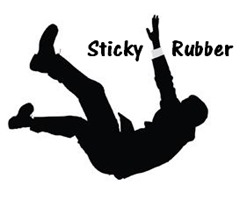 You’d think Science, knowing our history of continental land bridges and pre-historic migrants overwhelming natives, would have consensus on how many thousands of years it takes something to dominate its surroundings to become the new “native” – but you’d be wrong …
You’d think Science, knowing our history of continental land bridges and pre-historic migrants overwhelming natives, would have consensus on how many thousands of years it takes something to dominate its surroundings to become the new “native” – but you’d be wrong …


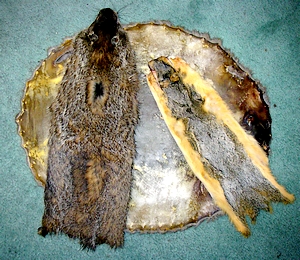 Us impressionists are a tough crowd, you’ll regret us painting your house because of all the spots we miss – but we’ll march you across the street and insist the color looks fine.
Us impressionists are a tough crowd, you’ll regret us painting your house because of all the spots we miss – but we’ll march you across the street and insist the color looks fine. Wrapper: Wrapper is present on blends for larger flies and can be omitted for building fine dry fly dubbing. Wrapper is usually an animal that has pronounced guard hairs – often with a light band that can absorb dye. It provides “spike” to the blend and breaks up the uniformity of the other two furs.
Wrapper: Wrapper is present on blends for larger flies and can be omitted for building fine dry fly dubbing. Wrapper is usually an animal that has pronounced guard hairs – often with a light band that can absorb dye. It provides “spike” to the blend and breaks up the uniformity of the other two furs.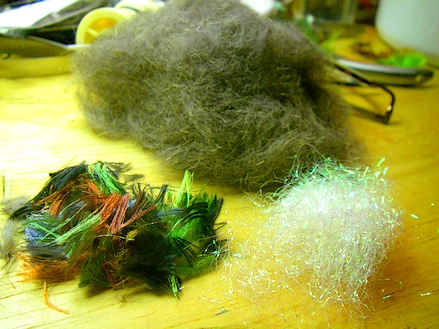
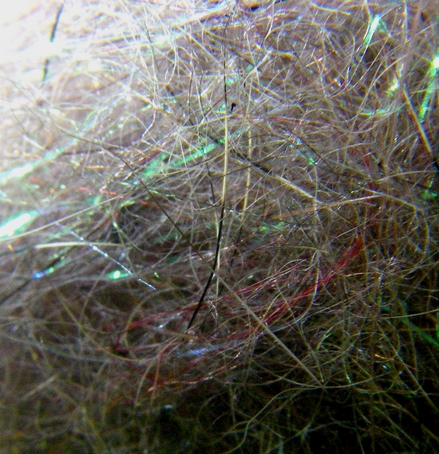
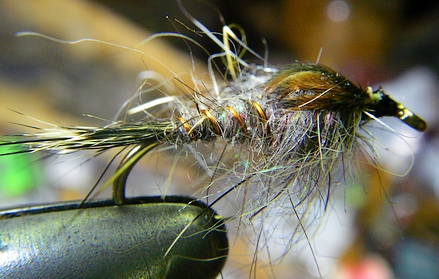

 The best Hardy’s were always pre-War, polar bear was pre-ban, the biggest fish were post-extinction, and you fished twice as much pre-marriage, somehow we’re all inexorably tied to one or the other prefix.
The best Hardy’s were always pre-War, polar bear was pre-ban, the biggest fish were post-extinction, and you fished twice as much pre-marriage, somehow we’re all inexorably tied to one or the other prefix. On eBay a “CFO” isn’t a “C.F.O.” – and the best deals come on a misspelling or an incomplete description. Professional resellers always use the “Hardy” word in the title, “.. a Scientific Anglers reel made by Hardy Brothers,” that’s because “fly reel” is too vague, and you’re likely to use the vendor name to search for specific models. Their goal is to put the merchandise in front of the folks looking for it, so they’ll use all the keywords possible, it’s good marketing.
On eBay a “CFO” isn’t a “C.F.O.” – and the best deals come on a misspelling or an incomplete description. Professional resellers always use the “Hardy” word in the title, “.. a Scientific Anglers reel made by Hardy Brothers,” that’s because “fly reel” is too vague, and you’re likely to use the vendor name to search for specific models. Their goal is to put the merchandise in front of the folks looking for it, so they’ll use all the keywords possible, it’s good marketing.